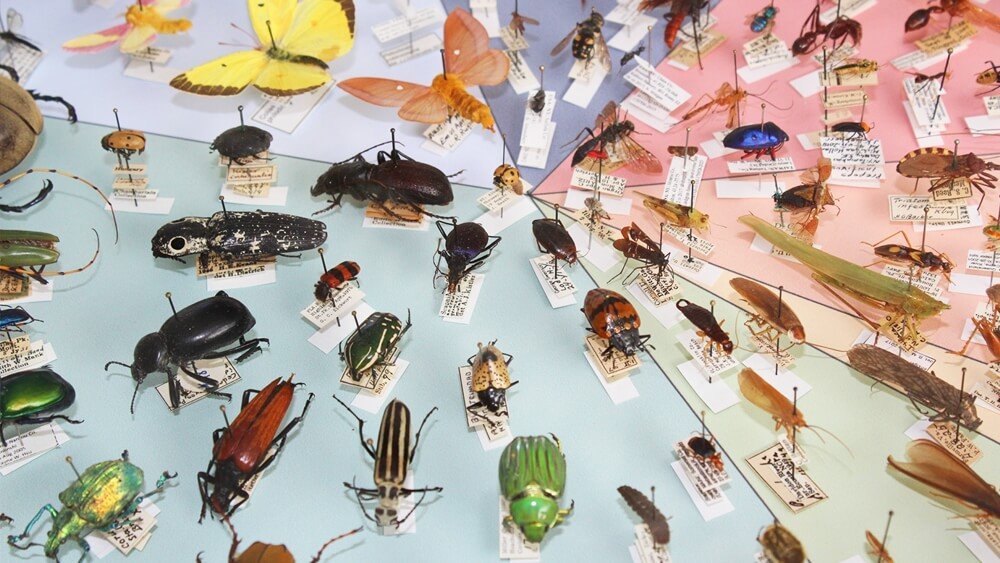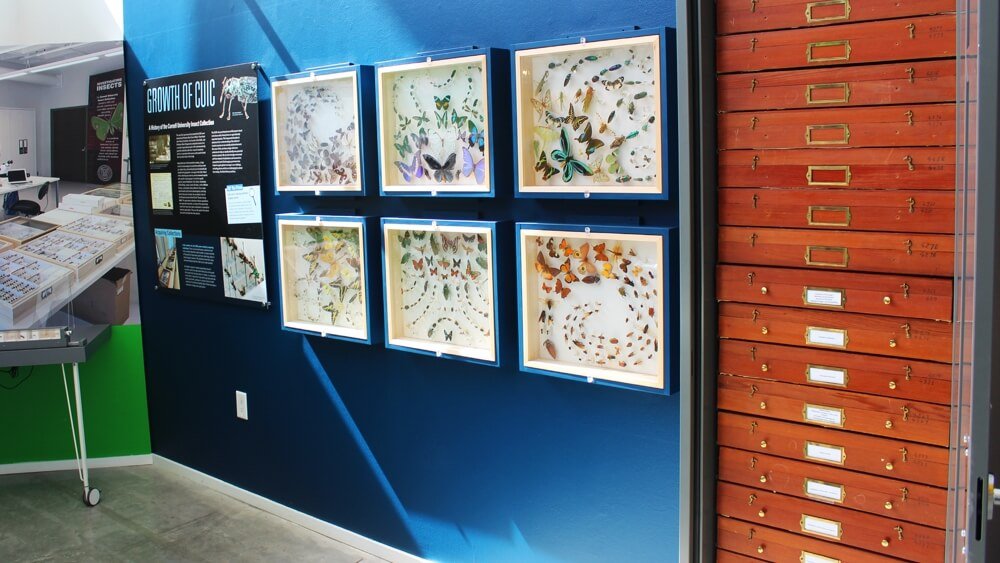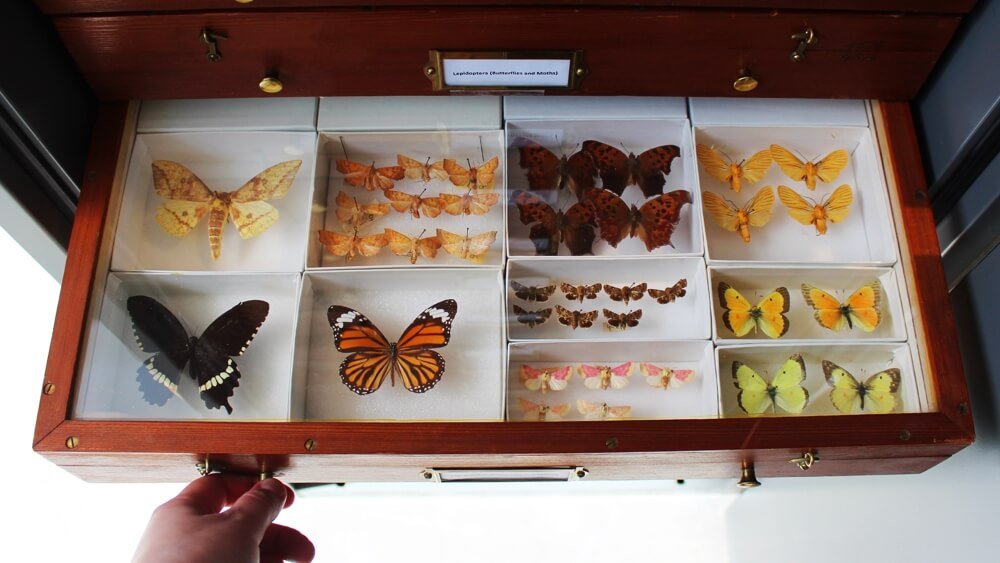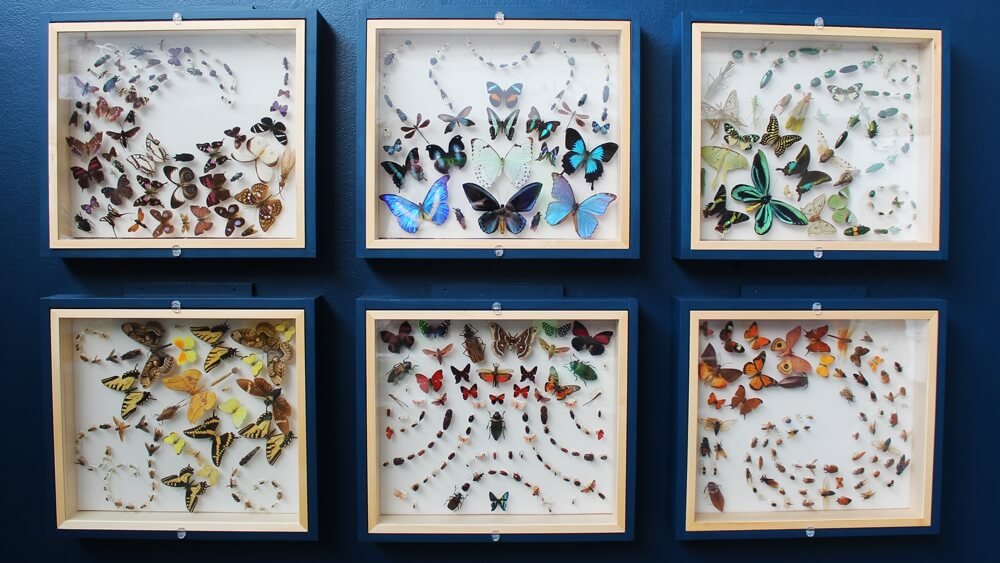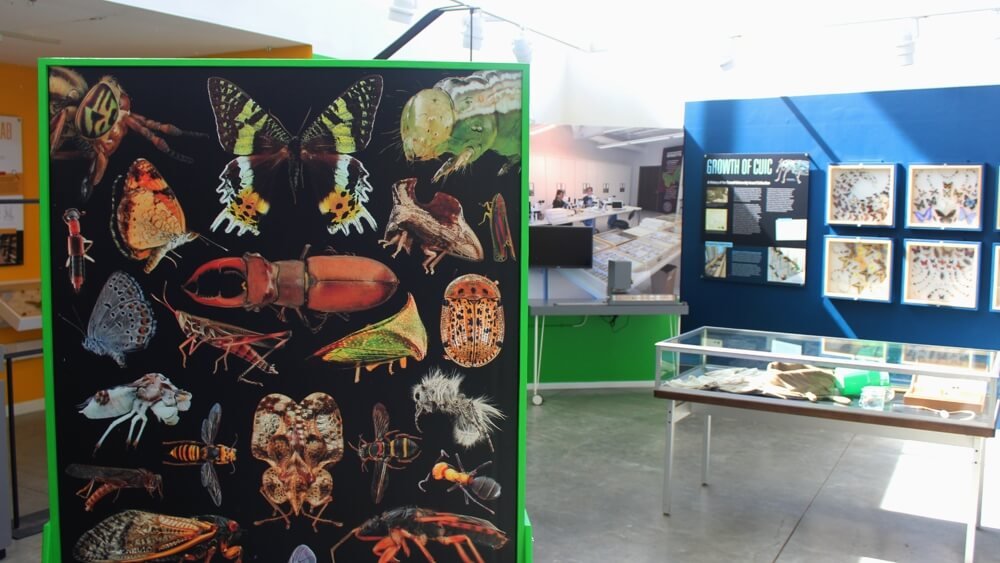Introduction
This online exhibit is based on the Six-Legged Science: Unlocking the Secrets of the Insect World exhibit in the Museum of the Earth.
Six-Legged Science: Unlocking the Secrets of the Insect World educates and excites visitors about the diversity of insects and their immense value, as well as highlighting the Cornell University Insect Collection (CUIC) and its over 150-year history and local and global importance. CUIC is one of the world’s top entomological collections and has over 7 million specimens. This exhibit enlivens visitor curiosity about insects through fascinating facts, awe-inspiring imagery, and engaging activities.
The exhibit includes a combination of fossil specimens, hundreds of pinned insects, insect sounds and videos, live insects, nests and tools from the CUIC collection, exciting large-scale photography, specimens up-close under a microscope, hands-on interactives, and more!
The exhibit opened at the Museum of the Earth on March 28th and will be on display through December 2022.
Acknowledgements
Funding: National Science Foundation (NSF DEB 1900357 to Corrie S. Moreau) and support from Cornell and CUIC alumni and donors
Scientific and technical content: Corrie Moreau and Jason Dombroskie
Specimen content support: Megan Barkdull, Joe Giulian, Chloe Jelley, Emily Jernigan, Loren Jones, Kyla O'Hearn, and Kevin Schermerhorn
CUIC social media team: Megan Barkdull, Jason Dombroskie, JC Dombrowski, Emily Jernigan, and Corrie Moreau
Videos: Adrian Smith (YouTube/AntLab, North Carolina Museum of Natural Sciences); Linda Rayor and the Naturalist Outreach Team
Photographs: Jason Dombroskie, Sam Droege (USGS), Steven Wang, Vicky Wang, Stephen Luk, RKD Peterson
Illustrations: Phillip Krzeminski
Featured researchers: Bryan Danforth, Jason Dombroskie, Ann Hajek, James Liebherr, Sara Miller, Corrie Moreau, Patrick O’Grady, and Michael Sheehan
Insect sounds: Lang Elliott, Wil Hershberger, The Macaulay Library at the Cornell Lab of Ornithology
Insects Through Time
Though they are small and often go unnoticed, arthropods dominate animal life on Earth.
They are the most successful animals in every part of the environment – water, land, and air.
Arthropods make up over 90% of the 1.2 million animal species that have been described so far.
Of these, over a third – 350,000 species – are beetles! These are just the species that scientists have officially named.
New species are being discovered every day, and some experts estimate that there could be as many as 10 million individual species of insects!
Fossil Insects
Around 428 million years ago, arthropods—the phylum to which insects belong—became the first animals to walk on land. These arthropods, which looked like today’s millipedes and scorpions, emerged from the ocean onto a barren landscape devoid of all but the most primitive plants.
The oldest fossil thought to be a true insect is from the Devonian Period and is about 400 million years old. By 350 million years ago, during the Carboniferous Period, insects had exploded in diversity, gaining wings and taking to the air. Insects that undergo metamorphosis experienced another radiation of diversity during the Permian Period. Insects were hit hard during the mass extinction 252 million years ago at the end of the Permian, but they bounced back. The insect groups we know today all descended from the survivors of that extinction event.
Queen Alexandra’s Birdwing
Ornithoptera alexandrae
Did You Know 🔍
Insects were the first animals to fly! Until flying reptiles (pterosaurs) evolved, they were the only flying animals on Earth for 100 million years.
Insects Through Time
Download PDF | 30MB



